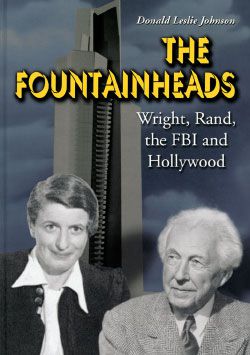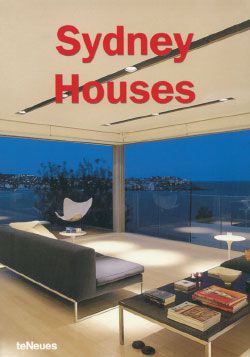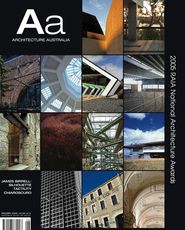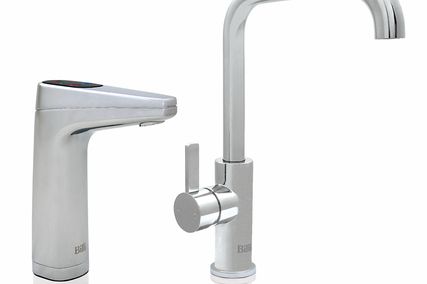THE FOUNTAINHEADS: WRIGHT, RAND, THE FBI AND HOLLYWOOD

Donald Leslie Johnson McFarland & Company, Inc, 2005. $US45.
In recent years, postwar American architecture and Cold War politics have enjoyed detailed analysis. Karal Ann Marling’s dissection of Disneyland (1997), Jane Loeffler’s chronicle of the US embassy building program of the 1950s (1998), and, more recently, Annabel Wharton’s mapping of the global strategies of the Hilton hotel chain (2001) have explored the far-reach of American power and paranoia in convincing exposés of architecture drawn into that country’s fostering of fear and conformity. Joining these studies is Donald Leslie Johnson’s latest book, The Fountainheads, which examines Hollywood’s political collusions and Ayn Rand’s efforts to promote Frank Lloyd Wright as the basis for her genius architect-hero Howard Roark in the film rendition of her eponymous novel (1943).
In this carefully researched (and at times charmingly arcane) case study, Johnson pulls no punches. Wright is revealed in his old age as cantankerous and finally unhappy with the film. Rand (like Wright, also with a reinvented name) is portrayed as domineering and brooking no changes to her wooden script, and in the end a second-rate screenwriter. Johnson savages the modernistic set designs of Edward Carrere and argues their mediocrity. The film is revealed as neither a commercial nor a critical success. In fact, the 1948 production was the second attempt to make the film. The initial screenplay was judged anti-Soviet in 1945 and at that time it was not considered proper to offend an ally and filming didn’t proceed. By 1948, however, in the early days of the Cold War, the ground had shifted and The Fountainhead symbolized emerging McCarthyist correctness. Clean-cut and innocuous Gary Cooper (who played Roark) and Rand became prominent “friendly witnesses” for the House Un-American Activities committee (HUAC) in the early 1950s.
Throughout this tawdry real-life drama, as Johnson cleverly delineates, Wright emerges as the most complex and chameleon-like figure: the subject of an FBI file since the 1930s (with his controversial but distant links to peace activist Jane Addams and his visit to Russia in 1937 that had earned him immediate notoriety); maintaining an always ambivalent but active relationship with clients connected to the movie industry since the 1920s; and typically mercurial and nimble-footed in recasting his design aesthetic in the postwar decade.
This thoroughly engaging analysis of flawed figures and a flawed system by Australia’s foremost authority on Wright is a refreshing reminder to all architects – that any form of practice anywhere in the world is not without the incriminating shadow of ethics, politics and patronage.
PROF PHILIP GOAD
SYDNEY HOUSES

Paco Asensio (ed). teNeues Publishing, 2003. $49.95.
Few people would argue that Sydney is dominated and defined by its harbour. Like Paris and the Eiffel Tower, there are few places in the heart of the city where there is not a sense of the relationship with the water. Perhaps that is what makes it so refreshing to find few glimpses of the harbour in Sydney Houses. The harbour cannot be avoided completely – the introduction opens with a passing mention of both the Opera House and the Sydney Harbour Bridge – but water is not the focal point of the book, merely a jumping off point and contextual note for an international audience.
The selection process has led to the presentation of a wide variety of houses. They have been chosen more by virtue of being designed within a few years either side of the Sydney Olympic Games – the impact of which is compared to that of the Great Depression – than because of proximity to the harbour. The book itself is organized geographically, divided into the centre, northern suburbs, and south-eastern suburbs, a break-up that interestingly excludes the western suburbs, home of the Olympic Games. Those unfamiliar with Sydney are offered a simple explanation of the elements at work within the regions, before being introduced to the houses.
The work of a selection of architects throughout Sydney has been carefully chosen. The scope is wide, with a variety of design styles present. It is interesting to see the works of lesser-known practices presented alongside the usual suspects of Sydney architecture like Engelen Moore or Harry Seidler. A wider selection of practices might have been possible, but without giving a sense of the design philosophies of each practice.
The descriptions of the projects are brief and to the point. Often only the constrictions of the site or its dominant features are outlined. There is room for little more and it is not required. The combination of drawings and photographs tell the story of each house, providing a remarkably clear sense of the project.
Sydney Houses proves that it is possible to build a picture of Sydney and the lives of its residents, without directly referencing the harbour.Water might be at the centre of the city, but there is more to Sydney, and its houses, than that.
KYLIE HOWE















